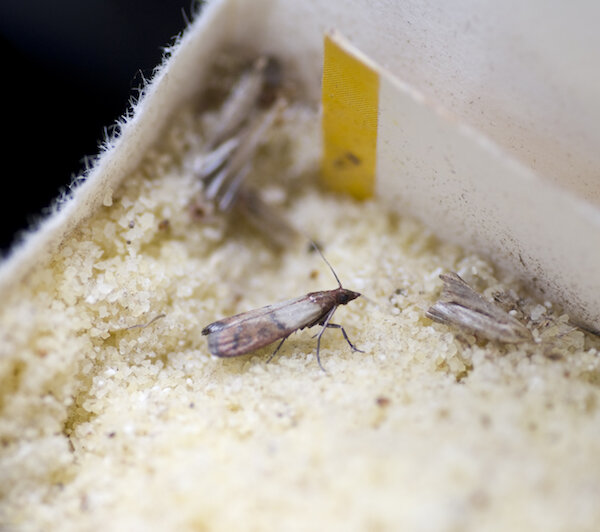Bugs in the pantry? Pantry moths, flour beetles and more…
/Late summer and autumn is peak pantry moth season, but moths, beetles and weevils can attack your dry foods at any time of year. Collectively these pests are called stored products pests. Here’s how you’ll know if you have a problem and what you can do about it…
What are stored product pests?
There are a large number of stored product pests in Australia – a range of small moths, beetles and weevils that attack a range of dried foods.
Perhaps the most common and well known is the “pantry moth” or Indian meal moth. The adult moth is often seen flying around houses at dusk or at night. However, it is the caterpillar rather than the adult moth that attacks the food. Often you can’t easily spot the caterpillar in the food, instead you will see the webbing, cobweb like material it leaves behind.
Adult Indian meal moth – a common pantry moth
There are also a number of small beetles and weevils, which tend to be brown in colour, that are also pests of stored food. The confused flour beetle and rice weevil are two common pests. The difference between these pests and the pantry moths, is that both the adult and larva stages attack and damage food.
Flour beetles are very small red / brown beetles
What foods do these pests attack?
All stored product pests eat a wide range of dried food including cereals, biscuits, flour, nuts, dried fruit, spices and cocoa. However, if you’re trying to locate the source of an infestation, don’t ignore dried pet food or even rodent baits!
How do these pests get into my food?
Pantry moths will lay eggs on or nearby a suitable food, providing the caterpillars that hatch an ideal environment in which to feed and grow. With caterpillars able to chew through plastic bags, storing dried food in solid plastic or glass sealed containers is a must. But beware, the caterpillars are able to crawl around the thread of screw top jars!
If you have a beetle or weevil problem, it is more likely that the problem arrived in the goods, gaining access during the production and packaging process.
What should you do if you have an infestation?
The first step in eradicating a problem is to find the source of the infestation. It’s important to empty all the food cupboards and check all food containers (both opened and unopened). Any food containing the pest will need to be placed in a sealed bag and thrown out. All remaining food should be placed in sealed containers. If you need help locating your pantry pest problem give Gold Coast Pest Services a call.
Once the infested food has been disposed of, it’s important to carry out a preventative treatment to food cupboards to pick up any adults that may have been missed. Gold Coast Pest Services uses specialised products suitable for use in food cupboards. We can also provide pheromone sticky traps which can be useful for picking up any pantry moths that fly into your home.
How to prevent a pantry pest problem?
To prevent a future problem with stored product pests, Gold Coast Pest Services recommend three simple steps:
Check all incoming dried food products
Stored all dried food in sealed plastic or glass containers
Carry out a regular clean out of the pantry, throwing out all old, unused food







